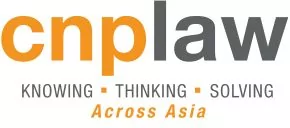An Overview
The relationship between employer and employee is regulated largely by the contract of employment between them. Generally, under Singapore law, parties are free to contract as they choose and any matters arising between them would have to be resolved by looking at either the express and/or implied terms of the contract in question. However, the law imposes certain limits on this freedom to contract.
The sources of these limits include common law and statutes such as the Employment Act (Cap. 91) ("EA"), first passed in 1968, with the latest amendments coming into effect on 1 April 2019. The EA sets a minimum standard for the key / basic terms and conditions of a given employment contract. Therefore, the terms of an employee's contract of service must be at least equal to, or more favourable than the provisions in the EA. Any term that is less favourable is rendered illegal, null and void to the extent that it is less favourable.
Other pertinent statutes shaping employment law include the Workplace Safety and Health Act (Cap. 354A) ("WSHA"); the Child Development Co-Savings Act (Cap. 38A) ("CDCSA"); the Retirement and Re-employment Act (Cap. 274A) ("RRA"); the Trade Unions Act (Cap. 333); the Industrial Relations Act (Cap. 136) ("IRA"); and the Income Tax Act (Cap. 134). Additionally, employers should be aware of the Central Provident Fund Act (Cap. 36) and their monthly obligations to the Central Provident Fund ("CPF"), as well as the Employment of Foreign Manpower Act (Cap. 91A) ("EFMA"), which regulates the terms and conditions for the employment of foreign workers and is particularly relevant in relation to foreign workers who are not protected under the EA (e.g. foreign domestic workers).
The latest round of amendments to the employment law framework was passed by parliament on 20 November 2018 with changes to the EA and the Employment Claims Act ((No. 21 of 2016))("ECA"). The amendments to these Acts came into effect on 1 April 2019, and cover four key areas: (i) extension of core provisions of the EA to protect all employees; (ii)extension of Part IV of the EA to protect more employees; (iii) enhancement of the employment dispute resolution framework; and (iv) enhanced flexibility for employers.
Please note that the following guide is a summary provided for general information purposes, aimed at aiding understanding of Singapore's employment law as at the date of writing. It is not exhaustive or comprehensive and reading this memorandum is not a substitute for reading the text of the various statutes to fully understand the extent of the obligations owed. This guide should also not be relied upon as legal advice.
Table of Content
This update is provided to you for general information and should not be relied upon as legal advice.




